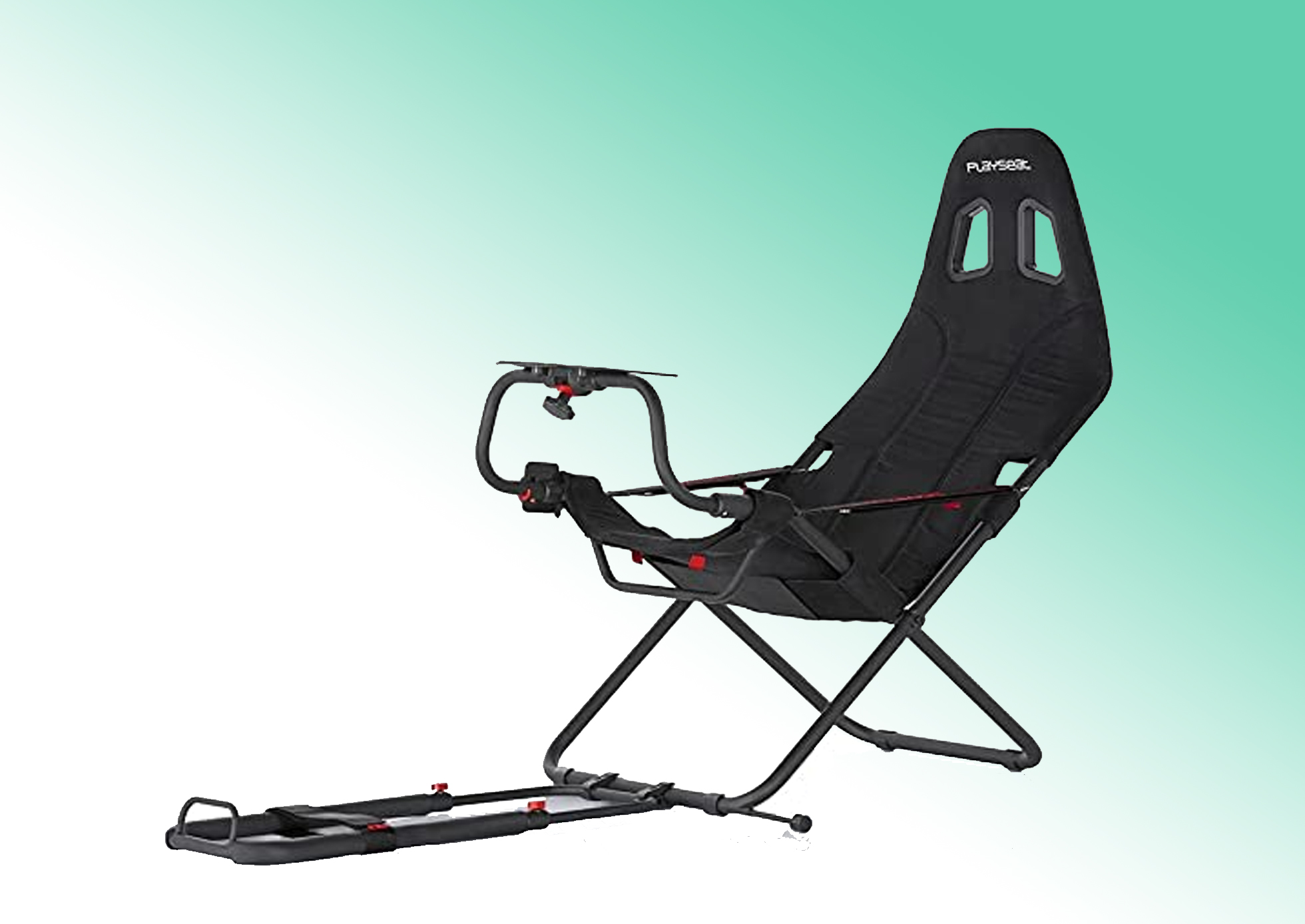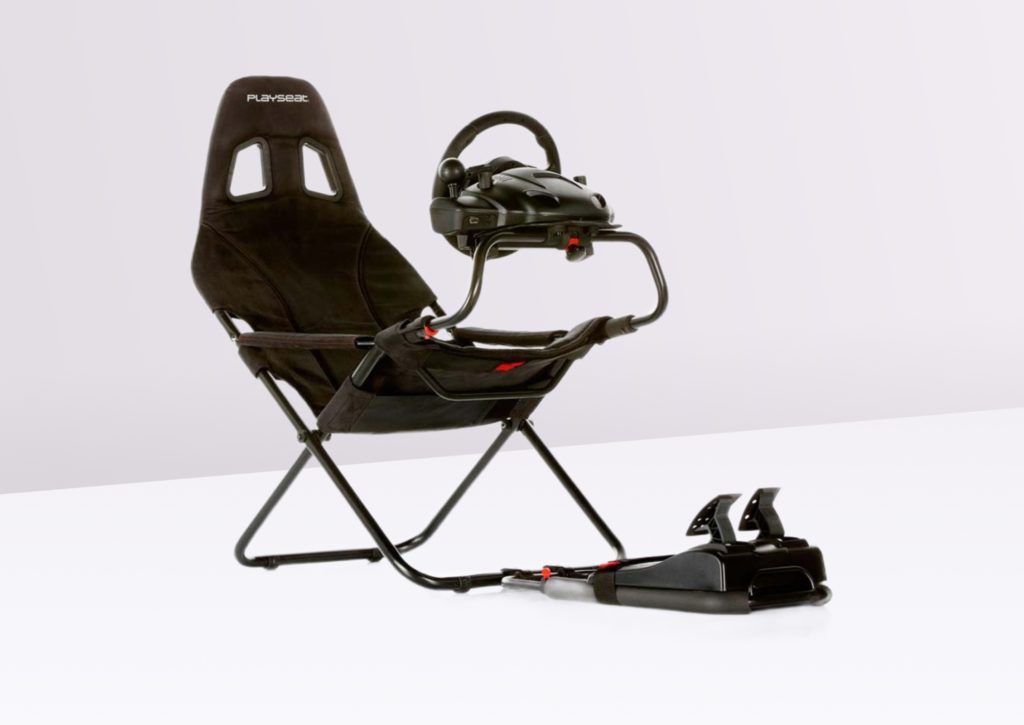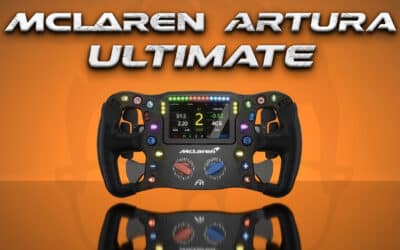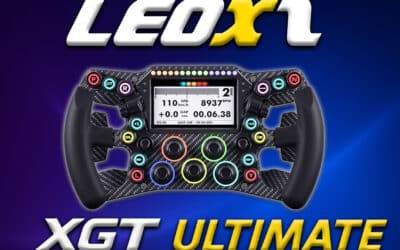The Playseat Challenge in a nutshell

Advantages & Disadvantages
✅ Good build quality
✅ Good value
✅ Compatible with many cranksets and flywheels/bases
❌ Difficult seat adjustments
❌ Lack of stability
ㅤ
If you’re a fan of sim-racing, there’s no need for me to give you an introduction to the Playseat brand and its cockpits. Otherwise, to put it simply, the Dutch manufacturer has dominated the market virtually since its inception, and I don’t see that changing any time soon.
Sim-racing is a discipline that has gained a lot of momentum in recent years, mainly with the democratization of games such as Forza Motorsport or Gran Turismo, but also Asseto Corsa to name but a few.
As you can probably imagine, each sim-racer or driver has his or her own setup, which necessarily includes a steering wheel, base and pedals. But fans and pros of the discipline push the realism even further by adding a cockpit, even a cheap one, just to really feel like you’re in a racing car.
Just like sim-racing peripherals, cockpits are different and, above all, aim to satisfy the needs of virtually all pilots by offering products in different ranges. You have entry-level, mid-range and high-end products. In what follows, I’m going to introduce you to an entry-level cockpit from Playseat, the Challenge. I’ll talk about its strengths, what I think of it and who it’s designed for.
Main and technical cockpit features
- Unique folding design
- Multiple driving positions
- Dimensions: 27 x 54 x 124 cm
- Weight: 8.5 kg
- Support system for most sim-racing peripherals
- Compatible with PCs and consoles, as well as the big names in the industry
- Multi-axis seat position adjustment
Playseat Challenge design
Visit Playseat Challenge is a cockpit whose design is both simple and beautiful. Unlike the brand’s other high-end cockpits (Playseat F1 for example), but it’s still a beautiful and above all simple product.
The main aim of the Playseat Challenge is to enhance sim-racing immersion with an inexpensive product suitable for amateurs and beginners alike. The tubular structure, which takes its design from a folding chair, is certainly popular, but very beneficial for accommodating many sim-racers. In any case, I like it because it’s a cockpit that can be tucked away in a corner and reassembled in just a few minutes (counting the time needed to attach all the peripherals). For people who don’t have a lot of space at home, it’s the perfect cockpit.
Manufacturing and finishing
Although Playseat Challenge isn’t a premium cockpit in the strict sense of the word, it’s still a quality product. The structure is tubular, just like a folding or camping chair. In fact, this is what makes it so popular with sim-racing enthusiasts and beginners.
The straps used are of good quality, and can accommodate a maximum weight of 122kg, with a maximum height of 2.2m. This is not the kind of product that collapses in on itself when you sit in it.
The structure provides support for the bases/wheels, as well as for a pedalboard. For the latter, there’s a kind of stopper at the end of the frame to keep the pedalboard in place, and a strap at the back to keep it in place. The system is very rudimentary, but effective for inexpensive setups.
The structure is black, while the “seat” is blue. All in all, I think it’s beautiful and, above all, quite sober, unlike the Playseat F1 and its bright orange/red.
Using the cockpit
So, when it comes to using Playseat Challenge, you need to know that this cockpit is compatible with a good proportion of sim-racing peripherals, especially those in the entry-level or even mid-range range. Given its price, it’s clear that Playseat is aimed at beginners and even sim-racing enthusiasts. If you’re an experienced or pro racer, you’re not going to use the Playseat Challenge as your main chassis. At the very most, you can have it as an additional cockpit.
Where the Playseat Challenge shines is in the fact that it’s foldable, taking up virtually no space. As I said earlier, its design is very similar to that of a folding chair, but much more solid and stable. It only takes a few seconds to fold and unfold, making it easy to store in a cupboard or behind a cabinet.
Bear in mind that this cockpit is not designed for tall people. The maximum weight supported is 122 kg, and the height is 2.2 m. If you exceed these two limits, I advise you to look for another cockpit.
The steering wheel/base support is a wide plate, accommodating numerous sim-racing peripherals such as the Logitech G29, G920and Fanatec CSL( to be discovered right here) etc. As for the crankset, it’s the same, with a fixing system with a stopper. It’s basic, but it does the job.

Sensation in play
The Dutch brand is clearly targeting a beginner audience with the Challenge, and this translates into rather basic in-game sensations. Even if you can adjust the seat, it’s still limited, which may have an impact on your driving style. For example, you won’t be able to adopt an F1-style driving position, as the cockpit doesn’t allow this.
Also, when I was using the Playseat Challenge, I noticed a certain instability during my sim-racing sessions. The “anchor” points are limited to just two tubes below you, and that’s really not very stable. If you ride hard enough, you’ll feel the whole chassis moving, giving you a feeling of insecurity.
But given its €230 price tag, it’s a problem that’s easily forgiven. And let me tell you, for this price, you won’t find a better one on the market.
Attaching peripherals is quick and easy, thanks to the plate right in front of you. The driving position is good, with the steering wheel at shoulder height. As far as I’m concerned, I feel comfortable in it, but only for short sim-racing sessions. If you’re going to be doing a lot of racing, for hours on end, expect to feel some discomfort after a while. But I repeat, the Playseat Challenge is for beginners, not initiates and sim-racing pros.
Playseat Challenge compatibility
Playseat obliges, this cockpit is compatible with practically all sim-racing peripherals available on the market, whether from FanatecThrustmaster and Logitech. However, this compatibility is rather focused on entry-level products, and that’s logical. You’re not going to buy a cockpit for less than €250 and then put in products that cost more than €2,000. It just doesn’t make sense.
For small budgets and beginners, the Playseat Challenge is the perfect choice in terms of quality, sturdiness and compatibility with peripherals and platforms.
Value for money
Playseat is the leader in the cockpit field, and quality is often the order of the day with its products. The Challenge, for its price, is a good cockpit that will delight many players wishing to embark on a sim-racing adventure.
The structure is metal, basic, but also quite solid. The material used for the backrest is of good quality, well relatively so, although I don’t think it will last long with daily use. But for €230, you can’t ask too much either, can you?
My verdict on the Playseat Challenge cockpit
I’m convinced that the Playseat Challenge will find takers especially among sim-racing beginners, and even among pros, but only as a secondary cockpit, like for two-up games.
Between its selling price, ease of use and wide accommodation of sim-racing peripherals, the Playseat Challenge remains an excellent product for its range and target audience. What’s more, this cockpit is available on the manufacturer’s store and on Amazon, which is, frankly, a big plus for me.
In any case, I’d recommend this cockpit if you want to try your hand at sim-racing as anamateur or beginner. Alternatively, you can discover the 4 best cockpits for Sim Racing at 2025 by clicking here.








0 Comments